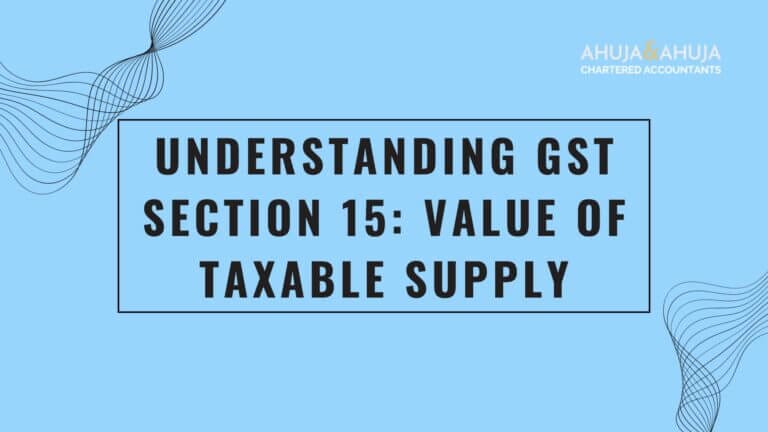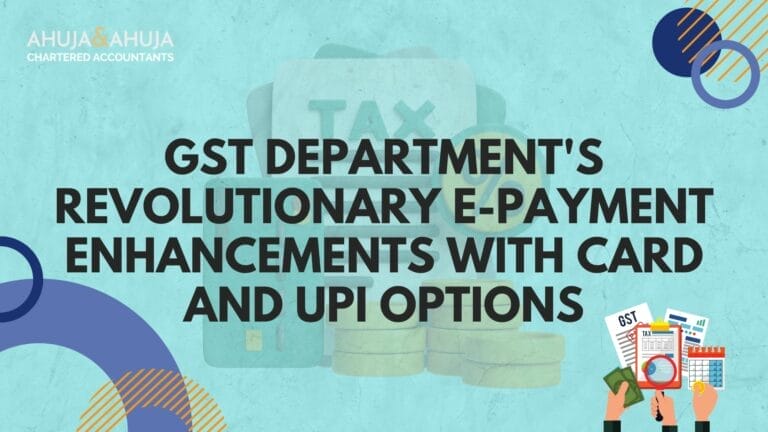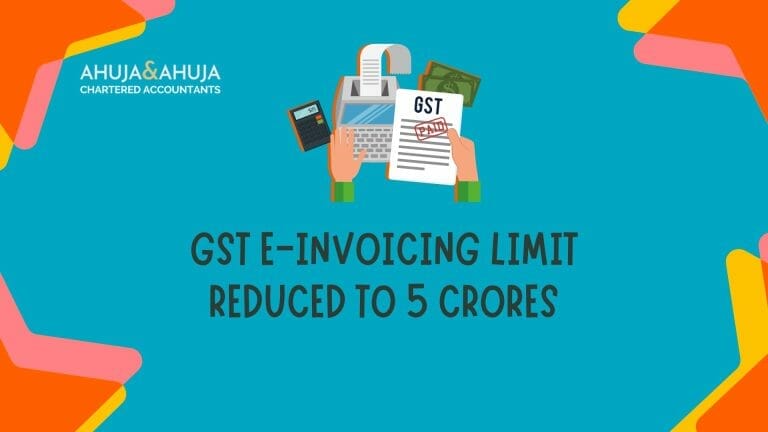Examining the Anti-Profiteering Clause in GST
Goods and Services Tax (GST) was introduced in India as a comprehensive indirect tax on the manufacture, sale, and consumption of goods and services throughout the nation.
Its aim is to consolidate all indirect tax levies into a single tax, except customs (excluding SAD), replacing multiple tax layers, reducing the cumulative tax burden on goods and services, and making taxation simple and transparent for various business operations including GST registration services in India.
Within this tax framework, the anti-profiteering clause defined in Section 171 of the CGST Act ensures that the benefits of input tax credits and reduced GST rates on goods and services are passed on to the ultimate consumers by way of reduced prices.
This provision seeks to prevent businesses from earning windfall profits at the expense of consumers.
Case Highlight: Reckitt Benckiser India (P) Ltd. vs. UOI
In a landmark judgment, the Delhi High Court upheld the constitutional validity of the GST anti-profiteering rules in the lawsuit filed by Reckitt Benckiser against the Union of India.
The firm contested the arbitrariness of the anti-profiteering clause’s application — a concern that many businesses echo in their operations under GST.
The court, while affirming the rule’s constitutional validity, also invited attention to the intricate balance that needs to be maintained between regulatory intent and business reality.
This decision underscores the necessity for stringent checks to ensure that the intended economic benefits truly trickle down to the base of the consumer pyramid.
Understanding the Need for Anti-Profiteering in GST
Unlike traditional sales tax, where only final sale was taxed, GST is a destination-based tax levied on every value addition, from production to the point of sale.
Here, every intermediary receives input tax credits that reduce their cost, which should ideally lower the price for the consumer.
The anti-profiteering clause was thus conceptualized to ensure that businesses pass on this tax cut benefit to the final buyer.
The clause’s importance transcends statutory compliance; it reflects a commitment to fair pricing practices in the national economic landscape.
However, its effective application often treads a fine line requiring precise adjustments aligned with the evolving GST checklist and action points that businesses must manage regularly.
Understanding its intricacies not only helps businesses adhere to legal mandates but also fosters a transparent relationship with consumers, reinforcing trust and adherence to fiscal ethics.
What is Anti-Profiteering in the Context of GST?
Section 171(1) of the CGST Act profoundly mandates that “any reduction in rate of tax on any supply of goods or services or the benefit of input tax credit shall be passed on to the recipient by way of commensurate reduction in prices.”
This clause is pivotal in ensuring that the financial benefits derived from GST by the providers of goods and services are naturally extended to the consumers.
Key Circumstances Covered Under the Anti-Profiteering Clause:
- Reduction in GST Rates: When the government lowers the GST rate on any product or service, the reduction should reflect in the final pricing of that product or service.
- Increase in Input Tax Credit: If a business gains an increased availability of input tax credits, those benefits should also lead to proportional price reductions for the consumer.
Example to Illustrate the Clause:
Consider the price structure of a smartphone where the cost including a profit margin totals Rs.100 and the existing tax rate is 18%.
The final consumer price will be Rs.118 (Rs.100 + 18%). Suppose the GST rate is then reduced to 5%. According to the anti-profiteering clause, the new consumer price should be Rs.105 (Rs.100 + 5%), effectively making the smartphone cheaper by Rs.13, which should be passed on to the consumers.
Regulatory Framework Enforcing Anti-Profiteering:
The CGST Act instigates a regulatory framework, including the formulation of the National Anti-Profiteering Authority (NAA). This body supervises the implementation of the anti-profiteering measures and ensures compliance by businesses throughout the country.
Rules Highlighting NAA’s Powers (Rule 126 & 127 of CGST Rules, 2017):
- Rule 126: Entrusts the NAA with the authority to determine the methodology and procedure for assessing whether benefits due to reduced tax rates or increased ITC have been sufficiently passed to consumers.
- Rule 127: Outlines the powers of NAA to:
- Ensure that reductions in tax or increased ITC are passed down in price reductions.
- Order businesses to reduce prices.
- Return overcharged amounts back to recipients, with interest.
- Impose penalties and/or cancel GST registration for non-compliance.
These rules signify a strict oversight mechanism aiming to protect consumer interests while ensuring fair business practices under the value principles of GST.
Critical Examination of the Anti-Profiteering Law
Though the anti-profiteering clause in the GST framework serves a noble purpose, its execution and the real-world impact bring to light several challenges that need addressing.
Mechanism and Implementation Challenges
The principal mechanism for enforcing the anti-profiteering rule revolves around the necessity for businesses to pass on the tax benefits to customers by reducing the product prices commensurately.
However, the law does not specify a clear methodology to measure the exact benefit that should be passed on. This creates uncertainty and inconsistency in enforcement.
Key issues include:
- Lack of Defined Formula: There is no standard formula described by the law to calculate the amount that needs to be passed on to the consumers. This ambiguity leads to varied interpretations and applications, causing inconsistency across different business sectors.
- Role of Market Forces: The law does not consider market dynamics such as demand and supply, competition, and economic conditions, which may also influence pricing decisions irrespective of changes in GST rates or input tax credit.
Impact of External Cost Factors Beyond Tax
The cost structure of any product or service is influenced by a range of factors including the cost of raw materials, labor, operational overheads, and more.
Significant movements in any of these costs can offset the benefits derived from reduced GST or increased ITC.
Under such scenarios, maintaining reduced prices as per the anti-profiteering law can become financially unsustainable for businesses.
Example Scenario Working:
Assuming the cost structure of a product was impacted due to an increase in raw material prices, even a reduction in GST rates may not result in lower final prices.
The anti-profiteering law misses addressing these practical complexities where costs driven by factors other than GST adjustments dictate final product pricing.
Business Realities vs. Anti-Profiteering Enforcement
Businesses often find themselves in a tight spot trying to comply with the anti-profiteering provisions amidst fluctuating market conditions and cost variables.
The potential consequences for failing to comply can be severe, including penalties and cancellation of GST registrations, leading to greater caution and sometimes over-compliance at the business end.
Further, what if the brand value increases? A brand might choose to increase prices based on perceived value rather than just costs and taxes, which complicates adherence to anti-profiteering rules further.
Conclusion on Anti-Profiteering Laws
While the intentions behind the GST anti-profiteering laws are just, the application and real-world implications showcase a need for refinement.
Ensuring that both businesses and consumers feel fairly treated under this provision requires:
- More precise guidelines and methodologies from authorities.
- Flexibility to accommodate various external factors influencing pricing mechanisms.
- A balanced approach that considers market dynamics alongside tax benefits.
In light of the complexities and potential implications, a discussion on potential legislative refinements seems warranted to make the anti-profiteering laws more effective and less cumbersome.
Conclusion: Anti-Profiteering and the Path Forward in GST Compliance
The anti-profiteering clause in the GST regime was crafted with a vision to protect the interests of the consumers and prevent businesses from unfairly profiting through GST-induced tax reductions.
While the constitutional validity of this clause has been upheld as seen in the case of Reckitt Benckiser India (P) Ltd. vs. UOI, its practical application raises several questions regarding fairness, feasibility, and business realities.
Recap of Key Points:
- Purpose of Anti-Profiteering: Ensure that benefits from reduced tax rates and increased input tax credits are passed down to consumers.
- Challenges Identified: Lack of clarity in the implementation mechanism, non-accountability for other cost influences, and the potential for arbitrariness in enforcement.
- Business vs. Regulation: A tug-of-war situation where businesses grapple with fluctuating market factors and stringent compliance expectations.
Recommendations for Improvement:
- Clear Guidelines and Formula: Authorities should provide a well-defined mechanism and precise formulas for calculating the benefit that needs to be passed on to the consumers. This will help reduce ambiguity and promote uniform compliance.
- Consideration of Market Dynamics: Regulations should acknowledge and adapt to other economic factors that affect pricing. This flexibility will allow businesses to remain competitive while still complying with the law.
- Constructive Enforcement: Focusing on educating businesses about compliance, combined with a system that allows for dialogue and feedback, can lead to a more effective and less adversarial implementation.
Future Outlook:
The ongoing evaluation and refinement of the GST anti-profiteering laws are essential. Legal frameworks need to evolve with economic dynamics and business models.
By fostering a cooperative approach that seeks input from all stakeholders — businesses, consumers, and regulators — the anti-profiteering rules can be structured to achieve their intended purpose without imposing unreasonable burdens.
In conclusion, while the anti-profiteering clause is a significant step towards ensuring fairness in price adjustments post-GST implementation, its success hinges on actionable and clear guidelines that consider both economic benefits and business realities.
It remains imperative that continuous improvements are integrated into this legal provision to ensure that it encapsulates fairness, encourages compliance, and effectively contributes to the overall economic welfare of the country.
Disclaimer
The materials provided herein are solely for educational and informational purposes. No attorney/professional-client relationship is created when you access or use the site or the materials. The information presented on this site does not constitute legal or professional advice and should not be relied upon for such purposes or used as a substitute for professional or legal advice.







